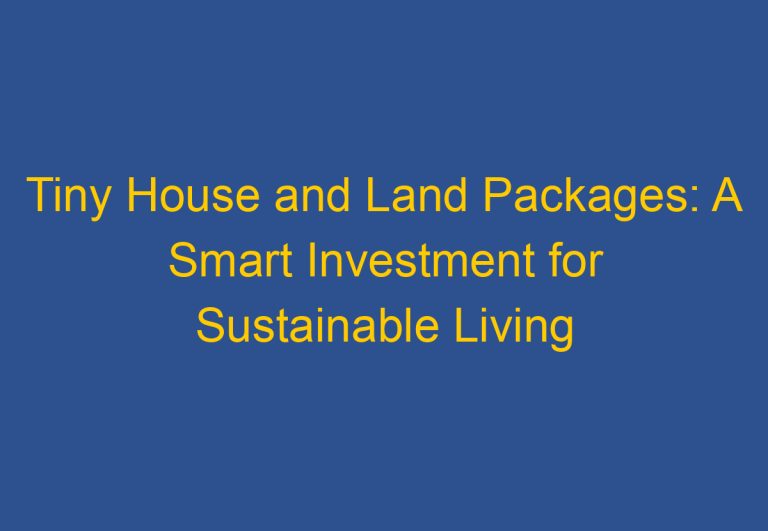Can I Build a Tiny House Without a Permit? Exploring the Legalities and Risks
Many people dream of owning a tiny house, but they are often unsure whether they can build one without a permit. The answer to this question is not a simple yes or no, as it depends on several factors. In general, building a tiny house without a permit is not legal, but there are some exceptions.
The first thing to consider is the size of the tiny house. If it is under a certain square footage, it may be exempt from the building permit requirement. However, this varies by state and city, so it is important to research the specific regulations in the area where the tiny house will be built. Additionally, if the tiny house is on wheels and considered an RV, it may not require a building permit but will need to comply with RV regulations.
Understanding Tiny House Regulations
When it comes to building a tiny house, it is important to understand the regulations and legal requirements that apply to your specific location. This section will cover the most important aspects of tiny house regulations, including building codes, zoning regulations, permits, and legal requirements.
Building Codes and Zoning Regulations
Building codes and zoning regulations are put in place to ensure the safety and well-being of the occupants of a building, as well as the surrounding community. Tiny houses are subject to the same building codes and zoning regulations as any other dwelling, and it is important to comply with these regulations to avoid fines and legal issues.
The regulations vary depending on the location, but in general, tiny houses must comply with the International Residential Code (IRC) or the local building code. The IRC sets minimum safety standards for construction, including requirements for ventilation, plumbing, and electrical systems.
Zoning regulations also vary by location and can impact where and how a tiny house can be built. Some areas allow tiny houses as accessory dwelling units (ADUs) on existing properties, while others require them to be on a permanent foundation and meet certain size requirements.
Permits and Legal Requirements
Building a tiny house often requires permits and legal approvals from the local building department. The requirements for permits vary by location, but in general, a building permit is required for any new structure or renovation.
It is important to check with the local building department to determine the specific requirements for permits and legal approvals in your area. Failure to obtain the necessary permits and approvals can result in fines and legal issues.
Tiny Houses on Wheels vs. Permanent Structures
One of the primary differences between tiny houses on wheels and permanent structures is the legal requirements for each. Tiny houses on wheels are often considered recreational vehicles (RVs) and are subject to different regulations than permanent structures.
In general, tiny houses on wheels must comply with RV safety standards, while permanent structures must comply with the IRC or local building code. It is important to check with the local ordinances to determine the specific requirements for tiny houses on wheels in your area.
Overall, understanding the regulations and legal requirements for building a tiny house is essential to ensure a safe and legal living space. It is important to check with the local building department and zoning office to determine the specific requirements for your location.
Practical Aspects of Tiny House Construction
Choosing the Right Location
One of the most important aspects of building a tiny house is choosing the right location. When building a tiny house, it is crucial to consider zoning restrictions and building codes in the area. Some areas may not allow tiny houses to be built on a permanent or transitional basis, while others may require a permit for any type of dwelling. It is also important to consider access to utilities such as water, plumbing, and electricity.
Design Considerations and Utilities
Design considerations are also important when building a tiny house. The floor area and ceiling height are important factors to consider, as they can impact the living space. It is also important to consider lighting and water supply, as well as the installation of a separate bathroom and stairs. It is important to ensure that the tiny house meets safety standards, including emergency exits and sufficient ventilation.
Navigating Tiny House Living
When it comes to tiny house living, there are a few things to keep in mind. For example, it is important to ensure that the tiny house is built to be both comfortable and functional. This includes considering the use of lofts, emergency exits, and lighting. It is also important to consider the house movement and the need for a separate bathroom.
For those interested in tiny house living, it is important to consider zoning restrictions and building codes in the area. This includes considering the use of tiny houses on wheels and tiny home communities. It is also important to consider the affordability of tiny houses as a form of sustainable and affordable housing. Overall, building a tiny house requires careful consideration of design, safety, and utilities to create a comfortable and functional living space.
Frequently Asked Questions
What are the legal requirements for building a tiny house on my property?
The legal requirements for building a tiny house on your property vary depending on the state and local regulations. In general, building codes dictate the minimum standards for safety and habitability, and zoning laws dictate where and how you can build. It is important to research the specific requirements in your area before starting construction.
Are there any states that allow the construction of tiny houses without permits?
While some states may have more relaxed regulations for tiny houses, it is important to note that most jurisdictions require building permits for any structure that is intended for human habitation. Even if a state does not require a permit, local regulations may still apply.
What is the process for legally building a tiny home on wheels?
The process for legally building a tiny home on wheels involves obtaining the necessary permits and complying with building codes and zoning laws. This may include submitting plans for approval, having inspections throughout the construction process, and obtaining a certificate of occupancy upon completion.
How do local zoning laws affect tiny house construction?
Local zoning laws can have a significant impact on where and how you can build a tiny house. Zoning laws dictate the allowable land use, density, setbacks, and other factors that can affect the placement and construction of a tiny house. It is important to research the zoning laws in your area before starting construction.
Can I legally live in a tiny house on my own land without a traditional building permit?
In most cases, living in a tiny house on your own land without a traditional building permit is not allowed. Building codes and zoning laws typically require permits for any structure intended for human habitation, regardless of its size. It is important to research the specific regulations in your area before starting construction.
What are the consequences of building a tiny house without proper permits?
Building a tiny house without proper permits can result in fines, legal action, and even demolition of the structure. It is important to comply with all applicable regulations to ensure the safety and legality of your tiny house.










